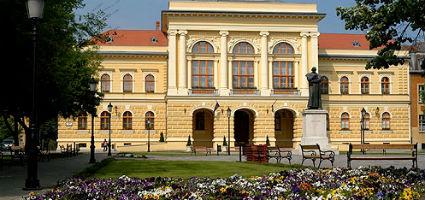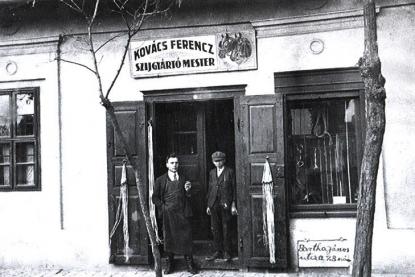2025. April 26. Saturday
József Koszta Museum - Szentes
 |
Address: 6600, Szentes Kossuth tér 1.
Phone number: (70) 228-8565, (63) 313-352
E-mail: latogato@kosztamuzeum.hu
Opening hours: Tue-Fri 9-15, Sat 10-16
|
Museum tickets, service costs:
|
Individual combined ticket for adults
(József Koszta Museum + János Fridrich Photographer + Péter Pál Civic House Museum + Őze Lajos Memorial House)
|
3400 HUF
|
|
|
Individual combined ticket for adults
(József Koszta Museum + János Fridrich Photographer + Péter Pál Civic House Museum + Őze Lajos Memorial House, residents of Szentes)
|
3000 HUF
|
|
|
Individual combined ticket for students
(József Koszta Museum + János Fridrich Photographer + Péter Pál Civic House Museum + Őze Lajos Memorial House)
|
1700 HUF
|
|
|
Individual combined ticket for students
(József Koszta Museum + János Fridrich Photographer + Péter Pál Civic House Museum + Őze Lajos Memorial House, residents of Szentes)
|
1500 HUF
|
|
|
Individual combined ticket for pensioners
(József Koszta Museum + János Fridrich Photographer + Péter Pál Civic House Museum + Őze Lajos Memorial House)
|
1700 HUF
|
|
|
Individual combined ticket for pensioners
(József Koszta Museum + János Fridrich Photographer + Péter Pál Civic House Museum + Őze Lajos Memorial House, residents of Szentes)
|
1500 HUF
|
|
|
Combined ticket for families
(József Koszta Museum + János Fridrich Photographer + Péter Pál Civic House Museum + Őze Lajos Memorial House, 2 adults + 2 students)
|
8500 HUF
|
/ family
|
|
Combined ticket for families
(József Koszta Museum + János Fridrich Photographer + Péter Pál Civic House Museum + Őze Lajos Memorial House, residents of Szentes, 2 adults + 2 students)
|
7500 HUF
|
/ family
|
The permanent exhibition titled 'Guilds, Craftsmen, Apprentices in Szentes' reviews handicrafts in town via tools and documents.

Three guilds were run in Szentes in the 18th century. According to data, 30 professions were cultivated in 1828. Most of in number were the boot-makers, weavers, smiths, wheel-makers, furriers, curriers and milners. Since most of the population of Szentes lived on agriculture, the number of craftsmen was small so their role in the social life of the village was insignificant. However, their work was necessary in the satisfaction of the need of manufactured goods.
Documents, writings related to the quite rich guilds of Szentes reveal information on the life of tradesmen, their costumes and community. A new era begin in the life of local craftsmen in 1870 when law ordered the abolition of guilds and the formation of economic bodies.
besides objects an documents related to guilds, the visitors can also take an imaginary journey to the lane of trades where they can take a peep inside the world of craftsmen via the tools they used.

Three guilds were run in Szentes in the 18th century. According to data, 30 professions were cultivated in 1828. Most of in number were the boot-makers, weavers, smiths, wheel-makers, furriers, curriers and milners. Since most of the population of Szentes lived on agriculture, the number of craftsmen was small so their role in the social life of the village was insignificant. However, their work was necessary in the satisfaction of the need of manufactured goods.
Documents, writings related to the quite rich guilds of Szentes reveal information on the life of tradesmen, their costumes and community. A new era begin in the life of local craftsmen in 1870 when law ordered the abolition of guilds and the formation of economic bodies.
besides objects an documents related to guilds, the visitors can also take an imaginary journey to the lane of trades where they can take a peep inside the world of craftsmen via the tools they used.
